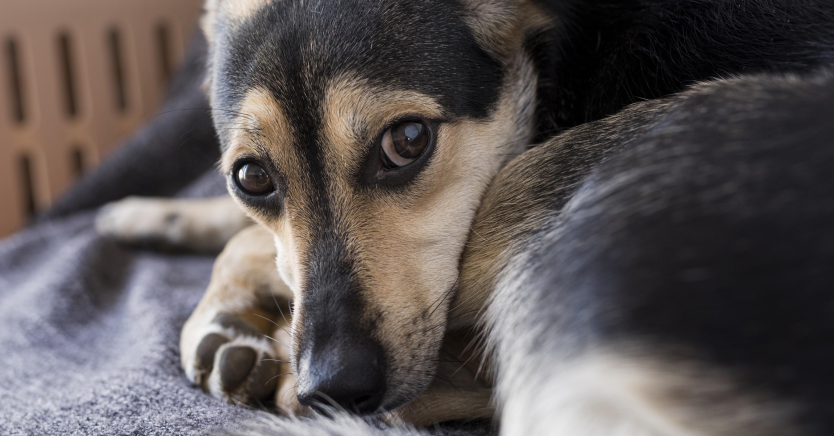Training Tips for Behavioral Issues or Aggression in Dogs
Learn how to identify dog aggression and behavioral issues, and discover effective training tips to curb these bad habits.

Like their human companions, dogs have their own unique personalities. Also, like humans, dogs may exhibit behavioral issues or signs of aggression. Aggressive tendencies in dogs is a serious matter and can have grave consequences if the problem is not promptly addressed.
According to the CDC, approximately 800,000 people seek medical attention each year due to dog bites, and half of these are children. Research also shows that about 15 percent of dog owners have been bitten by their own pet. Dog aggression does not usually go away on its own. Managing behavioral issues or aggression in dogs requires stringent at-home training and possibly assistance from an animal behavior specialist.
Defining Dog Aggression
The Animal Humane Society defines aggression as the threat of harm to another individual via growling, snarling, barking, snapping, biting, or lunging. There are many types of behavior and aggression problems that canines can develop, such as leash aggression, social aggression, pain-induced aggression, frustration aggression, fear-motivated aggression, learned aggression, and resource guarding, among others.
Early signs of aggression can indicate that a dog is in an irritated state and if the warning is not well-received by the humans or animals in close proximity, a warning can quickly lead to a physical attack.
Dog aggression signs may include:
- Becoming still and rigid
- Growl or snarl
- Mouthing
- Threatening bark
- Lunging forward
- “Muzzle punch” (dog pushes person with their nose)
- Showing teeth
- Nip or bite that does not tear the skin
- Bite that causes bruising or puncture wounds
- Numerous bites in rapid succession
- Snap
- Bite and shake
Correcting Dog Aggression & Behavior Issues
Once you have recognized the signs of aggression or behavioral issues in your dog, it’s important to take the necessary steps to minimize these tendencies. Dog behavior training begins at home and requires the patience and motivation of the pet owner.
Establish Yourself as the Alpha
Every household needs an alpha. If you allow your dog to take this role, you can expect to see some unsavory behavior as your dog tries to demonstrate dominance over the household. Becoming the pack leader is a critical step in dog aggression training as it helps establish boundaries. A good pack leader is calm, assertive, and enforces the rules of the home in a direct, yet composed manner. You can also establish your position as alpha by asking your dog to work. This means taking him on a walk before feeding him and waiting until he is in a calm state before offering food or treats.
Practice Leash Training
One of the most common behavioral problems that dog owners will experience involves walking on a leash. Dogs that have not been taught to properly walk on a leash may pull, lunge forward, or growl or bark at passersby. Leash training should begin in the house which allows pet owners to gain control in a low-stress environment before venturing outdoors. Harnesses and prong collars work well for leash training as they provide pet owners with control without choking the dog.
Provide Sources of Entertainment
Behavioral issues often originate from boredom. Some dogs will become destructive due to lack of physical or mental stimulation. When dogs become bored, they often find ways to entertain themselves, whether it’s chewing up your new sneakers or excessively barking. Going for walks and running outside helps to tire out your pet. The American Kennel Club also suggests playing indoor games, such as hide and seek or sniff out the treat. Provide plenty of toys and chews or stuff a Kong with Greek yogurt, canned pumpkin, or other healthy fillers.
Identify Aggression Triggers
Dogs are not born aggressive. Over time, certain events occur which can result in the development of behavioral problems, whether it’s a single event like previous abuse or a simple lack of training. Identifying triggers of aggression can help prevent your dog from acting out when he is feeling scared, possessive, dominant, or territorial. Food and other resources are common triggers of aggression. To help prevent poor behavior, feed your dog smaller meals throughout the day instead of free-feeding.
Try the Desensitization Technique
Desensitization can be a useful tool for battling fear-related aggression in dogs. When dogs are gradually exposed to things that they are afraid of, you can teach them to not become so anxious in the presence of these triggers. Desensitization takes time and it’s important to go slow as to not enhance aggressive tendencies. For example, if your dog is afraid of the vacuum, try vacuuming in a different room with the door closed or with a baby gate between you and your pet. Next, put the vacuum in the same room as your pet but on the other side of the room. Leave it running for 30 seconds and then turn it off. Repeat this until the dog becomes calm and reward your pet with a treat.
Speak with a Vet or Behavioral Specialist
Some cases of severe dog aggression or behavioral issues cannot always be remedied at home. It is often best to work alongside a dog training professional or animal behavior specialist to determine the cause of the behavior and execute a plan to adjust the behavior. Also consult with your vet about your concerns. In some cases, aggression or behavioral issues may be caused by underlying health issues.
Addressing signs of aggression in their early stages can help stop the behavior before it becomes more serious. With hard work and commitment, you can help your pet become a happy and well-adjusted dog.
Ready to start saving money on pet wellness care?
Then take a look at Mint Wellness, the pet wellness plan that provides fast reimbursement on routine pet care. Save on vaccinations, wellness exams, preventatives, dental, and more!
Learn More


